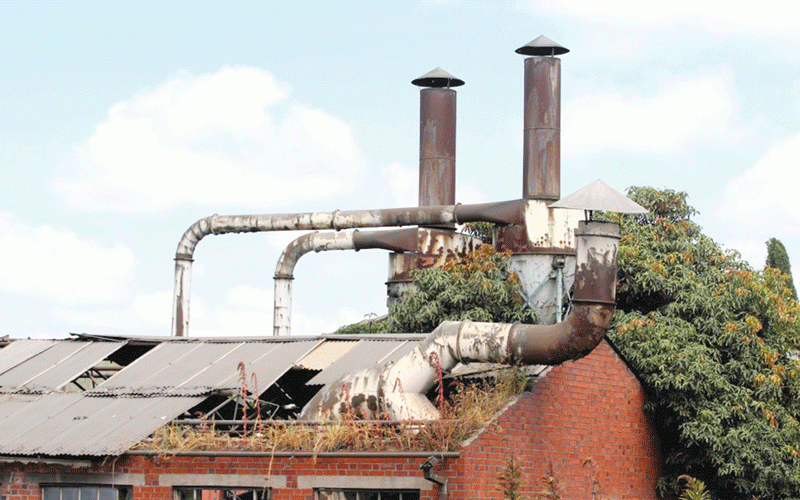
PROPERTY rates are a tax on the value of a property (residential or commercial), which is supposed to be paid by a home- or commercial property owner, to their respective municipality, on a monthly basis.
They are typically charged on a “cent in the dollar” basis, multiplied by the market value of the property.
For instance, if a home is worth US$100 000, the respective municipality may charge a tax of 0,02 cents per dollar value, multiplied by the total value of the property (0,02c x US$100 000), which results in a monthly tax rate of US$20.
In Harare, they are reflected in the monthly water bills from the City Council. Revenues from rates can be used to maintain and upgrade infrastructure, and municipal services, such as safety and security, healthcare, schools, etc.
Property rates are a form of wealth tax, meaning that, they serve to draw income for municipalities from wealthy citizens, who have managed to mobilise enough personal wealth to own a home.
They are designed to be progressive, implying that those with less-valuable properties are expected to pay less, as they are charged less “cents in the dollar” value on their property.
If poorly designed, however, property taxes can become burdensome, even for low income households and businesses.
It is particularly essential to ensure that municipalities do not continuously raise property taxes in a way that drives the country’s headline inflation upwards, or disrupts the smooth functioning of the overall economy.
- Minister bemoans shortage of schools
- Liberation war fighters inspire chanter
- BCC joins Green Cities initiative
- AFC Bank capital plan gets RBZ nod
Keep Reading
Since property rentals are incorporated into the drafting of a nation’s inflation figures, ensuring that municipal rates are kept at a minimal, will assist to keep a country’s overall inflation rate lower. That is because higher property rates are likely to be reflected in higher rentals.
Understanding how property rates are set and the major influences behind the stability of their pricing, will, therefore, be essential, in order to have mastery in this area.
Determinants of rates’ charges
Municipalities typically set a “cent in the dollar” rate, for different types of properties, as explained earlier. Nevertheless, it is essential to mention that commercial properties are usually charged higher rates than residential ones.
This means that even at similar property values, commercial properties are likely to pay more in rates than residential ones.
Different municipalities can charge different levels of rates, usually based on differences in affordability between the disparate geographical regions within the country.
In the case of residential properties, a certain portion of the market value is usually exempted from the rates, making it possible for the poorest in society, with low-value homes, to ultimately pay nothing in property rates.
The same exempted value is similarly exempted for all houses within a respective municipality. For instance, if a value of US$30 000 is exempted from property rates that implies properties worth US$100 000 will only pay for rates, which consider just US$70 000 of their property value.
There are also full exemptions, which may be given to those who own high-value properties that include pensioners and those who have become beneficiaries of government social assistance, due to their emerging challenging financial circumstances.
Among drivers of changes in property rates, therefore, are changes in market values of respective properties; change in “cent in dollar” rate charges, as determined by the respective municipality; changes in the value which is exempted from the municipal rates; and, changes in exemptions given to or withdrawn from respective homeowners.
There are also a few more other factors beyond these, which will be discussed later on in this article.
The deemed market values of properties, used for calculating the rates, are kept in what is called a General Valuation Roll (GVR), which is established and managed by each respective municipality.
If municipalities regularly update their GVRs, they manage to have the latest property values within their jurisdictions, which enable their revenues from rates, to be abundant and up-to-date with prevailing national inflationary pressures.
In some countries, municipalities are required by the constitution to update their GVRs at least once every five years.
In Zimbabwe, there is no unique methodology, which guides municipalities on how they set their "cent in the dollar" level of property rates.
Rather, the (cent in the dollar) rates are usually set at a level which enables them to simply contribute to overall municipal budgets, in a manner which reduces the need for municipal borrowing or the shortage of funds.
It is important to outline it is notable that revenues from municipal rates are not ring-fenced to strictly fund municipal assets and services, which relate to local properties.
However, if they were ring-fenced to finance only relevant expenses, which relate to properties and the community's welfare that would help to ensure the accountability of municipalities would be more transparent.
In effect, that would reduce the scope for poor governance and corruption. If that were the case, for example, raising the price of rates would strictly be influenced by cost-drivers underlying the provision of goods and services, which serve the particular ring-fenced activities.
This approach would likely result in lower property rates charges, throughout the country’s various municipalities. On the other hand, municipalities, which simply raise the price of rates, in order to fund shortfalls in their overall municipal budgets, can easily become errant with their increases, over-burdening property owners, in the process.
Overall, since property rates are a determinant of a country's national headline inflation levels, their prices should be as stable as possible.
Other drivers of rates’ inflation
Apart from the determinants of property rates described above, more are discussed below.
Annual grants given to municipalities from central government, along with cross-subsidies from other profitable municipal activities (beer sales, veterinary services, etc.), have a role to play, in order to keep property rates stable.
The growth of such grants and cross-subsidies, should, therefore, be greater than the growth in municipal costs, in order to eliminate the need for municipalities to raise property rates, as a means of funding their overall budgets.
Upper-limits on annual increases in municipal rates may be implemented through the constitution.
These limits on increases, should cover both the “cent in dollar” and overall revenues from rates, including those arising from a rise in property values as per municipal GVRs.
The government may enact a law which requires that property rates should not increase by more than 1% above the country's annual headline inflation, for example.
In South Africa, for instance, the Municipal Property Rates Act, has attempted to establish a similar law, although it has still not been enacted, since being drafted around 2007.
Underfunded mandates emerge when a municipality carries out a function, which is not ascribed to it in the constitution; is not commercially viable (profitable); and, for which it does not directly receive grants (subsidies) from the central government.
Examples of typical underfunded municipal mandates include the management of municipal libraries, museums, clinics, schools, housing and (municipal) police services.
When municipalities cannot generate enough surplus revenues to cross-subsidise these underfunded mandates, they would then be pressured to raise the price of property rates, in order to offset deficits.
If the central government sets the highest standards of service, as a requirement for all municipalities, this may quickly drain the financial resources of poorer municipalities, such as those in the peri-urban and rural areas.
If rural municipalities are expected to hire and maintain their employees, in line with urban standards (contracts, salaries, uniforms, etc.), for example, that can make it harder for them to preserve their little revenues.
Consequently, the rural municipalities would be pressured to raise additional revenues through raising the price of property rates, among other things. Another example would be requiring the rural municipalities to provide expensive paved roads in their jurisdictions, instead of cheaper dust roads.
Employee-related costs can be problematic for municipalities, especially if they increase way-above headline inflation. This can also place pressure on municipalities to raise property rates, in order to satisfy their overall budgets.
To contain employee-related costs, central government may also enact a law, which requires that salary increases for municipal employees do not surpass headline inflation by 2%, if there are revenue surpluses in respective municipalities.
However, during times of deficits, salary increases should go no further than headline inflation. Increasing the number of municipal staff in an attempt to improve service delivery should also be closely watched, as that can lead to higher overall costs, with limited productivity gains, in some cases.
Overtime, staff benefits (vehicles, loans, houses, allowances, bonuses, etc.) and ghost workers, are other employee-related costs, to keep an eye on. Ideally, the organisational structure of municipalities should be kept as lean as possible and regularly audited by external entities.
These approaches help to keep costs low, and reduce the need for raising additional municipal revenues through hiking property rates.
Municipalities report their revenues immediately upon billing their clients, not when the clients actually pay for the rendered services. This is due to the accrual method of accounting, which the municipalities use.
Bad debts are a dreaded cost which builds up for municipalities, when their clients do not pay their bills. Thus, if bad debts grow rapidly, that would have a significant negative impact on overall municipal finances.
Such situations typically end up placing pressure on municipalities to raise property rates and other types of municipal tariffs, in order to make up for lost revenues. Robust credit control and debt collection measures can help to minimise the impact.
Conclusion
Property rates are a determinant of a country’s overall inflationary pressures. They should, therefore, be kept as stable as possible. In order to achieve that, however, the factors, which drive their stability or volatility, need to be well-understood.
Tutani is a political economy analyst. — [email protected].











